C.S. Burrough's Blog, page 7
December 30, 2024
My review of Queen of Scots: The True Life of Mary Stuart by John Guy
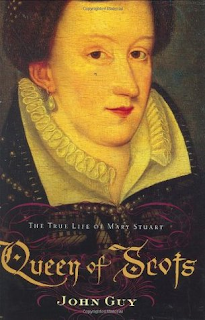
An essential element of any historical biographer's task is to put colour into the cheeks of their subject, which Professor Guy effects with aplomb in this meticulously penned tome. This queen, who has for centuries polarised commentariats, is a personal favourite, this being the twenty-something book of her I've relished. Each biographer depicts her as predominantly innocent or guilty. This one is firmly on Mary's side and puts his case supremely.
The details that divide on the Queen of Scots are those absent from posterity, those which perhaps Mary's royal son James I & VI helped erase from record, or which Mary's accusers collectively disposed of to save their own reputations with the passage of time. Much has been powerfully theorised on the potential forgery of her incriminating 'casket letters' with as much effectively arguing their authenticity.
We'll never know for sure, without some revelation becoming unearthed. Such are the tantalising dynamics of the relationship between this and her cousin queen and executioner Elizabeth I, of whom similarly divided thought tribes have evolved for similar reasons. Both queens have benefited and suffered from each other's propagandists.
In the face of excellent wider reception, this author has by some been unfairly accused of being as enamoured with Mary Stuart as her contemporary devotees were, his detractors complaining of his bias in her favour. Yet septuagenarian Professor Guy, who read history at Cambridge before teaching there, is a veteran historian of the highest order. He is as entitled, perhaps more so than his armchair critics, to an informed opinion.
It never fails to baffle me, reading critiques from those a half or quarter Guy's age, qualifying their pickiness citing not a single academic endowment of their own – I'm not talking critiques of his style but of his capacity to know his material – just how ferociously opinionated today's readers still find themselves on this dividing monarch. The bare facts still trigger kneejerk moral reactions to her legendary deeds.
I agree with John Guy on the reality of Mary of Scots' personally redeeming qualities. Without a religious agenda to my name and having equal fondness for her archrival, Elizabeth, I too have always kept an open mind on Mary's broader innocence and have consistently concluded that, like so many martyrs of her age put to death for treason, she cannot have been entirely guilty of everything charged against her. Such was the politico-judicial machine's modus operandi and still is. Evidence is, and always was to some degree, controlled, manipulated and confected by those in power over any such accused.
Nor can any rational apologist concede Mary's total innocence (anyone so unjustly imprisoned for so long would have plotted towards their liberty on whatever ethical ground presented itself). The truth, as always, must lie somewhere in the centre. I once more concluded, nevertheless, that here was an extremely likeable woman. One I still find intriguing enough to keep reading on as more gets written with the sophistry of modern research. One I remain unable to side either with or against. It's a stimulating position.
Highly recommend this book, especially to the unbigoted.
My review of Mary Queen of Scots, by Antonia Fraser
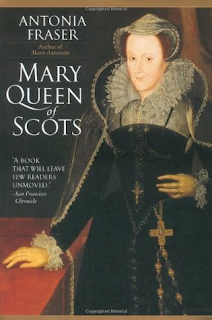
Nobel Laureate Lady Antonia Fraser's rare combination of formidable historical knowledge and exquisite penmanship makes this book a supreme standalone piece.
For this, her first major publication, she was awarded the 1969 James Tait Black Memorial Prize. The 40th anniversary edition was published in 2009, two years before she was elevated to Dame Commander of the Order of the British Empire (DBE) in the 2011 New Year Honours for services to literature.
Few of Lady Fraser's other historical biographies have come close, in my opinion, to this now definitive work on one of history's most unique and fascinating queens. The religiously martyred Mary, Queen of Scots, has for centuries also been politically demonised. Accordingly, Fraser enumerates in her 'Author's Note' that this book aims:
(1) To test the truth or falsehood of the many legends surrounding the subject; and
(2) To set Queen Mary in the context of the age in which she lived.
Fraser has endured considerable criticism from more recent biographers of Mary Stuart, her own portrait being largely sympathetic in stressing Mary's key virtues. Yet this grandmother of eighteen, widow of Harold Pinter and daughter of the 7th Earl and Countess of Longford, is is no doubt above such flippant critique from what must seem to her like amateur upstarts.
Anyone interested in history and monarchy will adore this. I drooled like the cat that's got the cream, stretching it out into slow, bite sized sittings. It was too superb to devour hurriedly.
Astonishingly high-quality reading which educates and entertains, leaving the reader begging for more. Can't be topped by anything in its class.
My review of Mae West: It Ain't No Sin, by Simon Louvish

I loved reading about this skilful, acutely intelligent performer who haunts my foggy formative years' recall. I still visualise her swagger, hear her distinct drawl in scratchy, early '30s movies that TV showed late at night, like 'She Done Him Wrong,' 'I'm No Angel' 'Bell of the Nineties' and 'Klondike Annie'.
What we learn from this book is that Mary Jane 'Mae' West, born 1893, turned her hand to many things including scriptwriting and jazz singing. She did some astonishingly risqué work long before there were any movies, or talkies anyway. Learning her stagecraft treading the boards, she wrote prolifically, including some fiction and much that was banned.
She produced some extraordinarily daring comedic material, loaded with double entendres outrageous even by today's standards. This was long, long before the age of political correctness, way before anything like the Hayes Production Code was even thought of. She subsequently became a pioneer in fighting censorship.
Her celluloid glory days need no elaboration here.
By the '50s she was such a legend she was blithely turning down roles like Norma Desmond in Sunset Boulevard. By the early '70s she was appearing in gender-bending things like Gore Vidal's 'Myra Breckinridge' with Raquel Welch. How long can any mortal keep going so, really? But she kept at it.
By the late '70s, making 'Sextette', she needed her lines fed to her through a tiny speaker hidden inside her wigs. She reportedly seemed disoriented and forgetful, having difficulty following direction. Failing eyesight made navigating around the set difficult for her. The camera crew started shooting her from the waist up (one official account is that this was to hide an out-of-shot production assistant crawling on the floor, guiding her around the set, but another I've read is that she had sandbags strategically placed for her feet to feel and guide her as she shuffled her way about the set floor).
I didn't mind Simon Louvish's academic style of documentation here, which accorded fine balance between the unavoidably outlandish subject material and the sensibly erudite final draft.
Fascinating and well-crafted biography about a greatly underestimated gal, the remarkable woman behind the legend of Diamond Lil.
My review of Bess of Hardwick by Mary S. Lovell
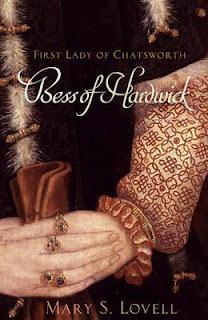
I relished this important biography of a fascinating woman. Among other things, Bess was maternal grandmother to the girl considered possible successor to Elizabeth I, Lady Arbella Stuart. This in itself strengthened Bess's intricately woven ties to royalty.
She was also for a long time the main keeper and confidante of the captive Mary, Queen of Scots, hand-picked by Queen Elizabeth herself, so highly respected and trusted was Bess. For anyone fascinated by that legendary Scots martyr queen, as I have always been, this biography makes for essential reading. That said, Bess's story is a standalone by any measure.Here was an extraordinary woman, especially for her time, but really against any historical backdrop. Transcending her somewhat humble beginnings, Bess married four times and rose to become an independent woman of means, materially on a par with Queen Elizabeth in wealth and power, an astonishing climb. This was the wealthiest non-royal lady in all England, keeper of rival monarchs, royal secrets and mistress of her own unique dynasty.
A formidable woman by all accounts, Bess created and left some of England's most splendiferous architecture including Chatsworth and Hardwick Hall ('... more glass than wall').
She earned respect for having retained her earthiness while becoming a breathtaking example of a new aristocracy, all the way demonstrating remarkable business acumen that many a man envied.
The story of this funny, po-faced termagant with her jewelled but work-worn finger ever on the ledger book, is an absolute must read, not to be excluded by any keen reader of Elizabethan history.
My review of Princesses: The Six Daughters of George III, by Flora Fraser
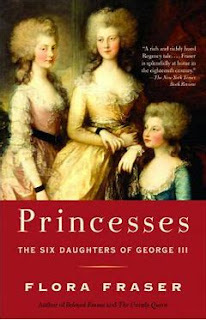
I was intensely immersed in Flora Fraser's impressive, high calibre tome. Historical royal biography is an addictive genre that leaves its readers ever hungry for something to top their favourites. This is a difficult call on authors. There are only limited options without repeating what others before have done brilliantly.
This author's notary mother, Lady Antonia Fraser, is an impossible act to follow. Think of most talented daughters living in their famous mothers' shadows and this syndrome becomes clear.
Being any such diva's daughter may have that advantageous head start insofar as many already know who you are and will finance your enterprise if only from curiosity. But there are accompanying soaring expectations, ones few mortals could realistically live up to.
Any established readership like Lady Antonia's is so loyal it can be wincingly unforgiving in its natural comparisons. That brilliant mother has already covered the most popular subjects and periods, leaving only the duller choices for her daughter to embark upon.
Flora Fraser has proven herself a chip off the old block to this first-time reader. Her characterisations are sublime, her detail meticulous, her research suitably mindboggling - I'd have expected nothing less and would have been greatly disappointed with less.
While this is admittedly not the most interesting period to me, the book covers a fascinating royal court. The civility and humanness of Mad King George III's cultured female offspring is striking. We like these women. They are deserving of such coverage. I came away better informed, further educated and entertained, if little more enthralled by the Hanoverians generally.
Perhaps only Lady Fraser's daughter could have achieved what has been pulled off here. A fine piece of work on a challenging group of subjects to document interestingly. As with her mother, I will read more of her, regardless which subjects.
My review of I'll Cry Tomorrow by Lillian Roth, Gerold Frank, Mike Connolly
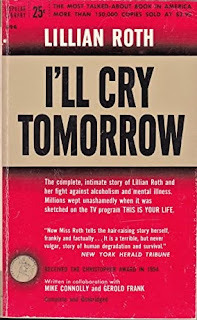
Riveting 1954 memoir of 1920s & '30s star of stage, screen and radio, Lillian Roth.Her horrific journey through alcoholism, making for confronting reading at times, was an unprecedented international sensation. Courageously penned, this became a global best seller of its era, in seven languages.
She was widely praised for passing on the message of recovery to millions in an era when alcoholism was seldom discussed in polite society. She was also harshly criticised by certain overly zealous self-appointed Twelve Step fellowship spokespeople wary of celebrities making themselves 'recovery' icons (some who disclosed their fellowship membership were accused of damaging 'the program's' reputation when they publicly relapsed).
Recovery controversies aside, this was, and remains, a brilliant standalone book, not at all the sort of tacky celeb tell-all that would evolve in subsequent years.
At six, as Educational Pictures' trademark, Lillian was painted as a living statue holding a lamp of knowledge, and her painter molested her, which she describes in chilling detail as the defining event that would forever haunt her.
Lillian's signature song was "When the Red, Red Robin (Comes Bob, Bob, Bobbin' Along)". That's about the best-known legacy many of today's generations may have of her. And this hair-raising book.
Actresses in considered to play Lillian in the 1955 film adaptation included June Allyson, Grace Kelly, Janet Leigh, Jane Wyman, Jean Simmons, Jane Russell and Piper Laurie. It was Susan Hayward who won the role and was nominated for an Academy Award for her gritty portrayal. That movie became the fourth-highest money maker of 1956.
Still an awesome read more than 50 years after its publication, this candid memoir gave me cold shivers, goose pimples and left me wanting to read more and more when I'd finished the last page.
My review of Marilyn: The Last Take, by Peter Harry Brown
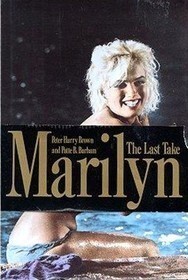
Regardless of its seeming irrelevance in the fifty-year blizzard of Marilyn biographies, I was unable to put down this curled and yellowed artifice, lent to me by a diehard fan, complete with pressed and mummified cockroach legs. So many Marilyn pieces are unreadable pulp non-fiction. This one earned its place in that handful of standout efforts.
Easy flowing, unpretentious yet thoroughly slick, the quality of workmanship held me throughout. Whilst lacking the glitzy hallmarks of more iconic, full-life biographies, this steers clear of popular Monroe mythology, sticking solidly to documented facts concerning only that contentious period imminent to her death.
So much was ado in 1962, as Marilyn, 20th Century Fox's most bankable star of the 1950s, commenced that studio's ill-fated Something's Got to Give, an updated remake of screwball comedy My Favorite Wife (1940). We read how, for months, she was insidiously undermined, goaded on-set, bullied by proxy, misrepresented by studio and media alike, defamed to the point of despair (and that was only her work life, without even starting on her personal life).
This vicious campaign of intimidation was spearheaded by ageing, drug-addled, acid-tongued director George Cuckor, aided by his buddies higher up the studio ladder. What's more, the film's already insultingly flimsy budget was being further siphoned away to cover that farcically expensive Burton-Taylor debacle, Cleopatra, which the ailing studio hoped would save it.
The effects of Cuckor's malicious vendetta on this, Marilyn's final movie, were compounded by a throng of Hollywood gossip columnists led by notorious Hedda Hopper and her archrival Louella Parsons. Fox's publicists also played a perversely pivotal role in wrecking her morale, as did the White House fraternity and its undercover henchmen, shielding the cracking image of a president at a critical time in his leadership.
In production reports and press releases, Monroe's genuine health issues were passed off as the temperamental play-ups of an unreliable diva. An underlying will to be rid of her simmered from office to office, coast to coast, awaiting some opportune moment. This involved studio heads and backers on one side and more sinister, undercover forces on the other, moving to prevent her affairs with President John F Kennedy and his brother, Attorney General Bobby, becoming publicly confirmed (or, better still, to end them).
Before Something's Got to Give's shooting commenced, Monroe had notified producer Henry Weinstein that she had been asked by the White House to sing at President Kennedy's Madison Square Garden birthday honours on May 19, 1962. Weinstein had granted her permission, believing it would not hinder production. JFK had even personally assured her he would pull any necessary strings to prevent her Madison Square Garden appearance causing any contractual conflict with Fox.
Yet soon after the event her romantic and professional tide turned. Kennedy suddenly disowned her, and Marilyn was publicly fired, amidst widely publicized plans to replace her with Lee Remick who was fitted into Monroe's costumes and photographed with Cuckor. This was to backfire, with her fans up in arms and her select remaining handful of powerful industry allies resolute about saving her.
Similarly, co-star Dean Martin, with final approval of his leading lady, loyally refused to continue without Monroe. After an extended stalemate and a personally engineered campaign aimed at her furious fans, Marilyn was reinstated under new terms and conditions with public popularity on her side.
Her detractors became more peeved than ever. She had, infuriatingly, triumphed once more, in yet another battle of Hollywood egos.
Awaiting resumption of the troublesome shoot, she had never been healthier or happier.
In the damage control wake of her 'Happy birthday, Mr. President' appearance, amidst the prelude to an important by-election, Monroe was callously cut-off and ostracized by both Kennedy brothers and their phalange of bureaucrats and relatives. Politically vulnerable and under the supervision of political spin doctors and their ruthless father, each Kennedy brother changed his direct telephone number and refused to take her calls, offering Marilyn no explanation or farewell, resulting in the easily derailed star, with her lifelong abandonment issues, feeling used and discarded.
Yet now, no longer a forgotten orphan, or an impoverished starlet, but a legend at the peak of her stardom, she had the guidance, support and encouragement of therapists, minions and mentors, along with her money and fame.
Heartbroken yet more determined than ever before to fight back at life and re-empower herself, she planned a press conference to end all press conferences - one that would have blown the lid off the Kennedy administration and embarrassed its tentacular web of connections which, unsurprisingly, extended to entertainment kingpins, studio heads and financiers.
Having correctly assumed her house was being bugged, many of her calls pertaining to this messy strategy were made from roadside pay phones. But written notes on her planned press conference were kept at hand, along with intimately detailed diaries pertaining to the Kennedy affairs.
The rest, as we know, is history. She was suddenly found dead, tagged with the 'accidental suicide' label in a bungled post-mortem case that never concluded but saw scandalous levels of sensitive information swept under carpets and left there for decades. Her house, the scene of unidentified comers-and-goers in the still of that fatal night, was cleared before investigation teams even arrived at her death scene, those highly sensitive press conference plans vanishing along with her revealing diaries. As if working in with all this, publicity machines covered up as much as they could by elaborating on her mental health problems and self-medication habits, emphasising the likelihood of suicide.
Monroe's autopsy, conducted August 5 by deputy coroner Dr. Thomas Noguchi, was pointedly clouded by the inexplicable disappearance of key liver and kidney tissue samples that would have proved she could never have self-administered the quantity of drugs that killed her.
For years, classified government files on her demise were kept tightly locked away, as were endless reels of Something's Got to Give footage showing she was never in better form, far from how the studio and its Washington connections would have had the world believe she had been in her final fourteen weeks on earth.
This book is no cheap conspiracy yarn, but a well-documented account of Marilyn Monroe's final months. A comprehensive lowdown on the contributing parties standing to benefit from the melee of cover-ups surrounding her premature and unresolved end.
Despite my sneezes with each crumbling page, it was well worth the tissues. An excellent read.
My review of Princess Margaret: A Biography by Theo Aronson
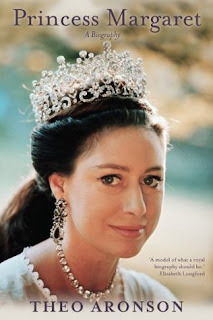
Princess Margaret was, when I was growing up, the royal rebel people cheered on. As much a '60s icon as The Beatles or the miniskirt, she was always up to some exotic mischief, usually in some scorching Caribbean place and more often than not with the wrong man. My parents' generation (Margaret's slightly elder peers), and their own parents, had a soft spot for this princess whose personal dreams never came true. 'Poor Maggie,' was a common catch cry whenever she made tabloid headlines with yet another scandal.
Theo Aronson tells another side of the public's ideas on her – how she earned widespread disapproval and media condemnation, not to mention much high Establishment tut-tutting. This the author qualifies with anecdotes which are entertaining, if not as thoroughly sourced as this reader would have liked (a good proportion of these could have been plucked from the air just to amuse).That much of the content is, conversely, very well documented, leaves the reader sceptical over quotes by so many unnamed people, e.g. 'family friend', 'guest at the event', 'high ranking official', etc. Of course, this also adds to the sense of intrigue we have come to expect from juicy royal biographies, yet this glaring feature places parts of the work more into the gutter press bundle than the authorised, legitimate one. Indeed, certain passages degenerate to gossip level, cheapening the overall effect.
That said, this is, for the most part, an entertaining and well written piece, even with workmanship notably weaker in some parts than others. Like his subject, Aronson is often a split case – sycophantic in many of his praises of Margaret, whilst vitriolic in some of his judgements and criticisms. This extremist swinging to and fro, between kindness and harshness, whilst matching perfectly the woman of whom he writes, lends the work a hyperbolic quality. The author seems in parts to defend his contentious subject to the hilt, whilst in others viciously slapping her beautiful face (curious, given that the princess was still alive at the time of this book's publication to read it). Even so, I was compelled to read on.
Here was arguably the last grand royal princess, cavorting around with the louche arts and pop communities, often a maverick at odds with her status, often hysterically funny and theatrical, yet equally often a diva of the most pompous, imperious kind imaginable. There was simply no predicting which of these polar-opposite split characters she would be. As if she had a deeply set identity crisis. Just as there is never any predicting which route this author will take when relaying some episode – will it be compassionate or condemnatory? This shifting objectivity and judgement I found disconcerting yet interesting.
Like Diana who followed, this princess gave the monarchy that much needed humane element by being an openly flawed and self-contradictory figure we all related to at some level. She was brave, tragic, spoilt, vulnerable, mercurial, dutiful, extravagant, haughty, cynical, catty ... yet when it boiled down to it bore the capacity to be infinitely kinder, more personally loyal and more down to earth than many royals we read of – it all depended on who you asked, and which occasion it related to.
I enjoyed this lightweight read. Though it could surely doubtful ever be considered the definitive work of its kind on this princess, I highly recommend it to the diehard royal biography buff.
December 6, 2024
My review of The Pursuit of Love, by Nancy Mitford
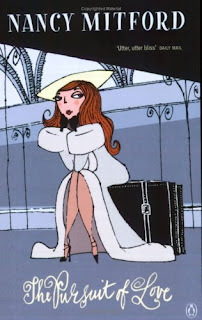
For some years this modern classic was on my 'to read' list,while I was more interested to read about the author. Nancy Mitford, eldest ofthe famed Mitford sisters, debutante, socialite, committed Francophile andmistress of tease, had a sting in her tail, camouflaged by her droll funniness.
Many have theorised over this, her breakthrough novel of1945, after her four previous novels had met with little or no criticalacclaim. Mitford aficionados have long weighed up what Nancy said about thisbook's relationship to her infamous family, with what her sisters said and withwhat endless Mitford biographers have observed or opined.
That some of the sisters insisted Nancy invented much oftheir family legend has become misreported over time: Nancy was writingfiction!
Where this much documented accusation of 'Oh you've made itup, darling' gets distorted is in the sisters' later response to JessicaMitford's memoir Hons and Rebels|, which Nancy and others said'borrowed' some of Nancy's fictional detail from The Pursuit of Love forthe sake of spinning a good yarn.
So, Nancy firmly altered the real Mitford family structurein fictionalising her kin for this novel - presumably in part to avoid libelsuites, such was the infamy already surrounding some of the real-lifesisters:
Three of these six sisters were so politically radicalisedthat one (Diana Mitford Mosley) spent the war years in prison after leavingfirst husband Bryan Guinness for British fascist movement leader Sir OswaldMosley (himself in the habit of suing for defamation). Another sister (JessicaMitford) eloped with the Prime Minister Winston Churchill's Communist nephewEsmond Romilly initially to fight with the Loyalists in the Spanish Civil War,never returning to live in England. A third (Unity Mitford) shot herself in thehead after ingratiating herself with Adolph Hitler in the prelude toWWII.
Mainstream media, including national press and Pathénewsreel, had a field day with them.
By the time Nancy penned this fourth novel, these threesisters' notoriety was set in stone. It's fair to say she used that notorietyin proclaiming The Pursuit of Love as loosely based on herearly family life - everyone wanted the juice on this bunch!
But much of the Mitford sisters' real-life controversy wasomitted from this novel or juggled around, the resemblances everyone looked formostly missing.
Nancy includes fictional Radlett sister Linda leavinghusband Tony and going to France with new Communist beau Christian (not a PrimeMinister's nephew) to help refugees fleeing the Spanish Civil War (as did Nancyherself with husband Peter Rodd).
She has fictional sister 'Jassy' sister forever stashing herpocket money in a 'Running Away Account' (true for real life sister JessicaMitford, but this was about as close as it got to the much publicised real lifefamily shenanigans.
So, the novel's similarities to Nancy's kin did not muchconcern her more infamous three sisters, who had brought the Mitfords into thepublic eye. What she drew from and elaborated on were things like her parents'eccentricities, quirky household pastimes, the trademark camp Mitfordian lingo,their bizarre pets, and the setting itself, fictionalised as 'Alconleigh' butbased on real life Asthall Manor.
This she does deliciously, as agreed by just about everyoneon the novel's release. We are there, in Alconliegh, immersed in the bustle ofa large minor aristocratic family closely resembling the Mitfords, feelingtheir love and their growing pains.
The two heroines, older than the other kids, are eager toescape into adulthood, which will only eventuate by marriage. Hence thetitle The Pursuit of Love, suggested by Nancy's lifelong friend,sparring partner and sometime literary mentor Evelyn Waugh.
Once the informed reader accepts this fictionalisation ofthe Mitfords into the differently structured Radletts, desists digging fordisguised public characters and scandals, we are left with the novel itself, ascharming as consensus has always deemed.
However, Nancy Mitford, ever hailed for her wit and humour,was the first to admit she was no serious literary force, at least at thispoint in her career, her craft developing substantially later.
There was therefore some anticlimax as I turned the pages,caused by the hype and consequent expectation. Charming and comic as the novelis, it is surprisingly featherweight and not so well penned in patches.
For example, as primarily autodidactic she had not learnedto punctuate, Evelyn Waugh still telling her years later of a manuscript sheran by him: 'The punctuation is pitiable, but it never becomes unintelligibleso I just shouldn't try. It is clearly not your subject' (quote from TheLetters of Nancy Mitford and Evelyn Waugh).
Despite such minor issues I intermittently howled laughingat her characters and dialogue, glowing fuzzily at her heartwarmingdescriptions of interwar genteel country life.
More recent biographers have said that this was her first'happy' novel, as in not being meant as a stab at some of her more irritatingrelatives (definitely so in her preceding four novels).
The explanation for this was that Nancy, for the first timein her life, was head over heels in love, with the man she would so remain allher life if somewhat unrequitedly, French politician Gaston Palewski. Heappears as protagonist Linda's third love interest Fabrice de Sauveterre, awealthy French duke.
Nancy even dedicated the novel to Palewski, so much had heloved hearing the tales of her youth. His encouragement and her adoration ofhim were her incentive to write 'less bitterly'.
It was with this emotional release, after previouslyenduring a difficult marriage and before that a fruitless engagement to a gayfiancé, that Nancy wrote minus the stifled anger of her previous works.
Not quite all 'shrieks' and 'teases', the story does havetragic overtones, providing lightness and darkness, saving it from becominganother of her earlier barbed satirical farces.
Such was its success that Nancy wrote two sequels, Lovein a Cold Climate (1949) and Don't Tell Alfred (1960).
Like many such modern classics, The Pursuit of Love andits immediate sequel Love in a Cold Climate became highlypopular screen adaptions, arguably more entertaining than the novels.
As I'll always be a Nancy Mitford fan it's irrelevant howconsistently I liked or disliked this one defining piece. The bits I lovedoutweigh any minor disappointments and I will, without a doubt, read it again.
My review of The Old Wives' Tale, by Arnold Bennett
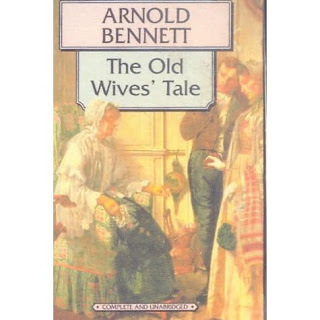
First published in 1908, this is considered one of Bennett'sfinest works. His breathtaking detail and description is something to behold.
The story begins around 1840 in the Stafforshire potterytown of Burslem, where young sisters Constance and Sophia Baines work in theirparents' draper's shop. They are initially close but contrastingly differentgirls, Sophie the younger considered incorrigible by the more proper Constance.As they grow up the girls drift, mentally and geographically, apart. Later alsoset partly in Paris, the tale tracks each sister, separately, into the fullbloom of adulthood, the prime of maturity and the frailty of their dotage. Itconcludes in 1905.
The book divides into four parts. The first, 'Mrs Baines',introduces the two sisters and those around them, in their bedridden father'scombined shop-cum-house overlooking the town square. With their father ill, thesisters' primary parent is their mother. By the end of this section, rebelliousSophia has eloped with a travelling salesman, while obedient Constance hasmarried her parent's shop employee, Mr Povey.
The second part, 'Constance', follows sensible Constancethrough to her grey-haired retirement, when she reunites with her long-lostrunaway sister. Her unremarkable life is defined not by adventure oroutstanding accomplishments, but by deeply personal events, such as herhusband's death, her growing worries over her son's life decisions and socialbehaviour.
The third part, 'Sophia', follows passionate young Sophiaafter her elopement. Deserted in Paris by her husband, she survives the odds,becoming a successful pensione proprietor.
The fourth part, 'What Life Is', sees the two sistersreunite. Worldly old Sophia finally returns to her Burslem childhood home,which plain old Constance has never left.
It's mindboggling that one man could have created so muchintricate detail in these wonderful Victorian characters. How on earth did heachieve this?
In his initial published introduction, Bennett mentioned hisdebt to Guy de Maupassant's Une Vie (that same introductionoriginally included a nod to W. K. [Lucy] Clifford's Aunt Anne, buther mention is intermittently omitted from various subsequent editions and ispermanently absent by the 1983 edition). Bennett's inspiration for the actualstory was triggered by a chance encounter in a Paris restaurant, as herecounts:
'...an old woman came into the restaurant to dine. Shewas fat, shapeless, ugly, and grotesque. She had a ridiculous voice, andridiculous gestures. It was easy to see that she lived alone, and that in thelong lapse of years she had developed the kind of peculiarity which inducesguffaws among the thoughtless.
I reflected, concerning the grotesque diner: "Thiswoman was once young, slim, perhaps beautiful; certainly free from theseridiculous mannerisms. Very probably she is unconscious of her singularities.Her case is a tragedy. One ought to be able to make a heartrending novel out ofthe history of a woman such as she." Every stout, ageing woman is notgrotesque — far from it! — but there is an extreme pathos in the mere fact thatevery stout ageing woman was once a young girl with the unique charm of youthin her form and movements and in her mind. And the fact that the change fromthe young girl to the stout ageing woman is made up of an infinite number ofinfinitesimal changes, each unperceived by her, only intensifies the pathos.'
Perfect in every way, I have never read anything in thiscategory that surpasses this in literary quality or storytelling. Why this isnot more famously celebrated I can't imagine. No major updated screen adaptionhas eventuated since the 1921 film The Old Wives' Tale starringFay Compton, Florence Turner and Henry Victor, other than the 1988 BBC TVseries Sophia and Constance starring Alfred Burke, LynseyBeauchamp and Katy Behean.
I adore this oft overlooked great classic. Everyone shouldread it at least once in their life.



